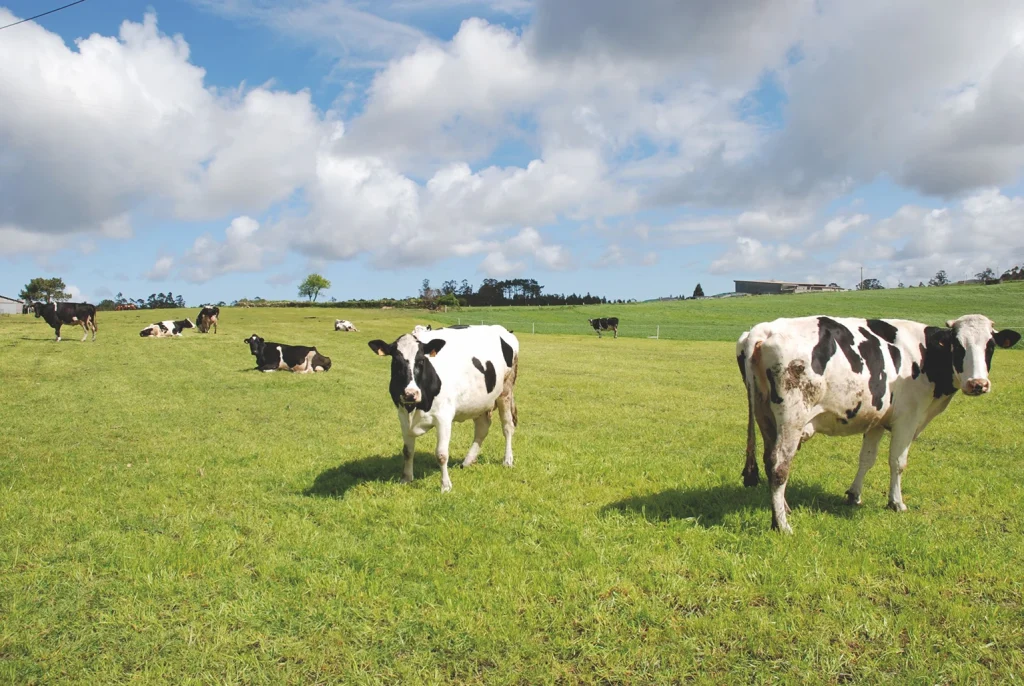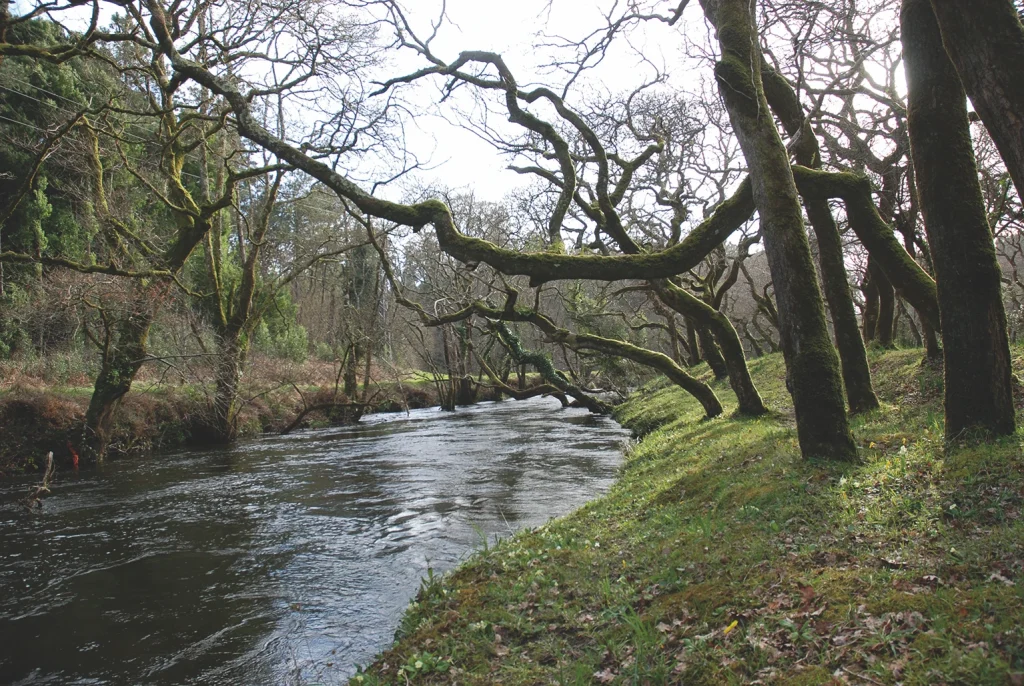Costa da Morte has good prospects for balanced economic development, partly because it is a natural setting ideal for all kinds of activities and because of the potential of the resources available on land and at sea.
The fact that it is an economically underdeveloped region with low levels of job creation is due more than anything to a series of causes that led to the region’s resources being under-exploited.
Its location at the westernmost point of the Iberian Peninsula (and the European continent) meant that the territory suffered from almost constant isolation and a lack of roads and other means of communication, which had a lot to do with a lack of initiatives to bring progress to the area. There is no other territory in Galicia with a surface area like Costa da Morte, almost 2,000 km2, that is not crossed by at least one railway line. There were plans to build one from A Coruña to Corcubión in what was called “the three Cs” (for the three towns that were to be linked: A Coruña, Carballo and Corcubión) or the “train of wealth”, because of the prosperity that it would bring to the region. Despite various attempts by municipalities and well-known local political figures and businessmen in the early 20th c., it was never made a reality. If the line had been built, the conditions for development in the region would have been very different.
Costa da Morte was also marginalised in the plans for road construction in the 19th and 20th centuries, given that no national motorway crosses the region. The most important road was the regional AC- 552 from A Coruña to Fisterra, which was built with painful slowness in the second half of the 19th c. Improvements to this road were carried out in the last decades of the 20th c., with similar delays.
The first motorway to cross the region was the AG-55 from A Coruña to Carballo, built in the 1990s and financed almost entirely with public funds. However, road maintenance was then financed by a toll system, which has only further held back regional development. The extension of this motorway from Carballo to Baio was opened in 2016 under an undercover toll system, but it needs to be further extended to Cee, which should now be completed.
Road connections with the city of Santiago are even worse, especially with the centre and north of Costa da Morte, from Baio or Carballo.
These two urban centres should be connected to Santiago with better roads, which would connect with the AG-56 Santiago-Noia motorway.
Road network limitations such as these, combined with governmental neglect that has lasted for many years, goes a long way towards explaining the low economic development of the region, which has forced local residents to adopt the long-standing tradition of emigration, a problem endemic to the region and one that continues right up to the present day.
The economy of Costa da Morte has historically been based on the primary sector, agriculture, livestock and fishing. The exploitation of these resources based on traditional skills continued until very recently, leading to an unplanned and much delayed evolution to a modern economy.
This modernisation of the local economy in the farming and livestock sector focused mainly on intensive dairy farming for milk production, which did little to create any new jobs.
This meant that a large part of the farmland was given over to fodder crops to feed the new livestock. However, there was no commitment to develop modern farming to produce wheat, legumes, potatoes, vegetables and fruit that would adapt well to the climate and soil type and that could be profitable in a modern market, especially in the most fertile lands. It would therefore be necessary to combine the plots of farmland under cooperatives to make them profitable and specialised in producing and marketing some of these products. The region also has good conditions for producing ecological products, for which there is a growing demand by consumers who are ever more aware of the need for a healthier diet.

Workers who left traditional farming because it was unprofitable or because they chose not to form part of the livestock farms went on to work in construction or emigrated to Western Europe.
Fishing has been the main economic activity in coastal towns such as Caión, Malpica, Corme, Laxe, Camelle, Camariñas, Muxía and Fisterra. Inshore purse-seine fishing is the most common practice in the region to capture sardine and xurelo (Atlantic horse mackerel), most commonly at the ports of Malpica and Camariñas; longlining for hake, red sea bream, gilt-head bream and pomfret in ports like Muxía and Fisterra; and other systems with baskets to catch octopus and velvet crab, or small-scale fishing vessels with driftnets (trammel nets, gill nets, etc.) to catch a wide variety of fish and shellfish in all the ports.

This fleet was gradually renewed from the 1960s when the market price of fish began to increase and catches were abundant. Some ports also saw the introduction of coastal trawlers that caught a range of fish and shellfish.
A drop in catches started in the 1990s due to overfishing in certain fishing grounds and because of the limitations imposed by increasingly restrictive regulations for the sector. The industry also faced a serious problem with the lack of generational replacement in fishing families, which caused many companies to dispose of their vessels due to the lack of new crew members and rely on subsidies from the EEC, with the intention of reducing the coastal fishing fleet, which led to ports having fewer and fewer vessels. This situation caused a drop in fishing activity in most ports in the region and an ever increasing focus on the tourist sector, despite the fact that this new activity and fishing complement each other perfectly, since the latter provides one of the raw materials for the varied and delicious cuisine of this part of the Galician coast.
Costa da Morte is a region with a low level of industrialisation. One of the first local industrial initiatives was the alloy factory at Cee, which is still active under the name of XEAL (Xallas Electricidad y Aleaciones). The next initiatives to appear were the Cerdeimar canning factory in Camariñas, the Calvo canning factory in Carballo and the UNENSA fiber board factory in Coristanco.
Calvo canning factory on the outskirts of Carballo
Industrial estates were then established in Cee, Vimianzo, Baio, Ponteceso, Carballo and A Laracha, where most local companies now have their business premises; many of the companies operate in the construction, automotive, hospitality and food sectors.

Industrial estates were then established in Cee, Vimianzo, Baio, Ponteceso, Carballo and A Laracha, where most local companies now have their business premises; many of the companies operate in the construction, automotive, hospitality and food sectors.
There is a lack of industrial firms that could transform the wealth of raw materials available in the region, such as companies that extract products from the farming and livestock sectors, and which could set the foundations of a solid food industry. The same process could take place with the wood taken from local mountain areas, much of which is marketed without being transformed, when the logical thing to do would be to set up a wood industry focused on furniture making and construction.
The excellent conditions in Costa da Morte for producing electricity from wind farms on mountains that combine favourable conditions for installation would ideally be another factor in encouraging local industry. However, most of the energy produced is exported to other territories.
Tourism represents another major potential sector for Costa da Morte. The unique natural, historical and gastronomic heritage makes this region one of the most attractive in Galicia.
The incomparable coastal landscapes with impressive cliffs, wild pebbled and sandy beaches, and small rías and little urban development is just one of its major attractions. The beautiful landscapes of the interior should not be forgotten either: the banks of the Anllóns, Porto, Castro and Xallas rivers, and other places such as the crags of Pasarela and Traba and Monte Pindo.
The historical, cultural and gastronomic heritage is another great attraction for its quality and abundance. An unmissable part of the region’s history are the dolmens, hillforts, churches and chapels, manor houses, lighthouses and hórreos, a unique and valuable architectural heritage. The rich local cultural heritage can be discovered in many unique forms, such as the legends, customs, language, literature, music, crafts and cuisine.

Another major tourist attraction of this region is the Way of St James from Santiago to Fisterra-Muxía, which receives a growing number of pilgrims from all over the world.

Few other territories have such a rich crafts heritage such as the lacework of Camariñas or the ceramics of Buño. Costa da Morte is both a coastal and inland region, which means that it has a wide variety of products from land and sea, the raw materials for the excellent local cuisine.